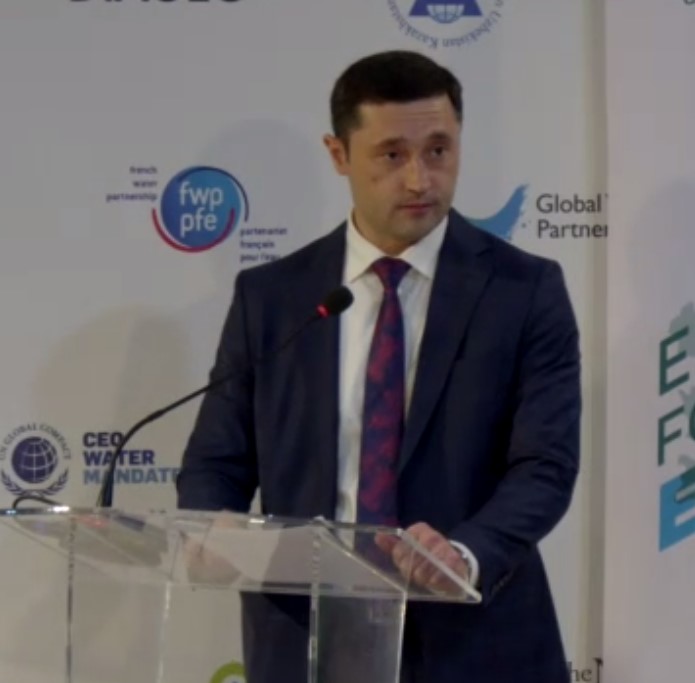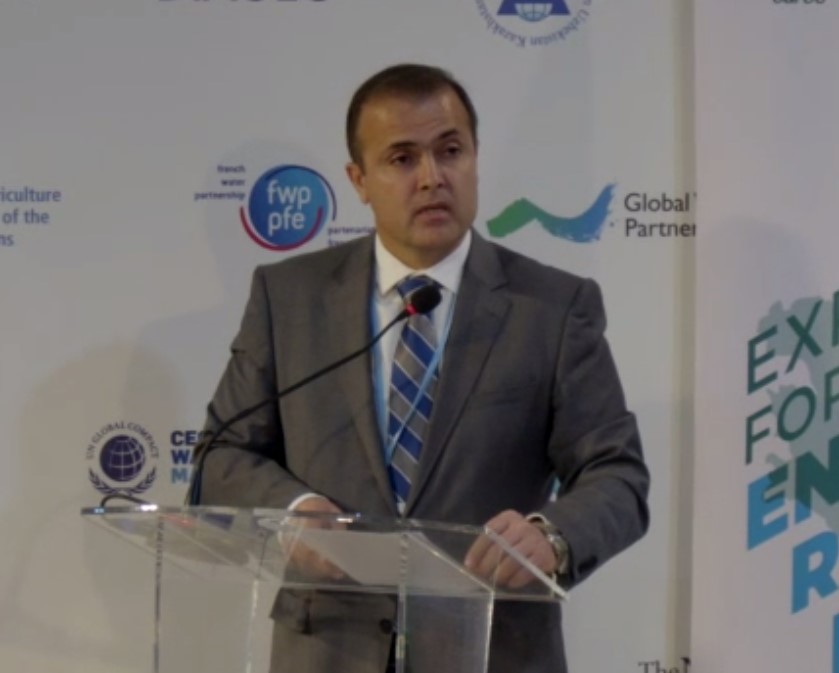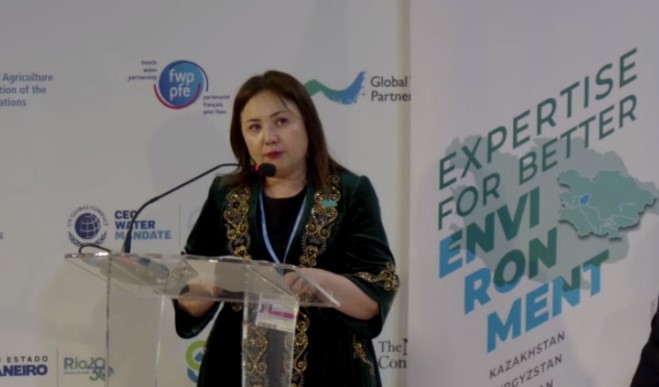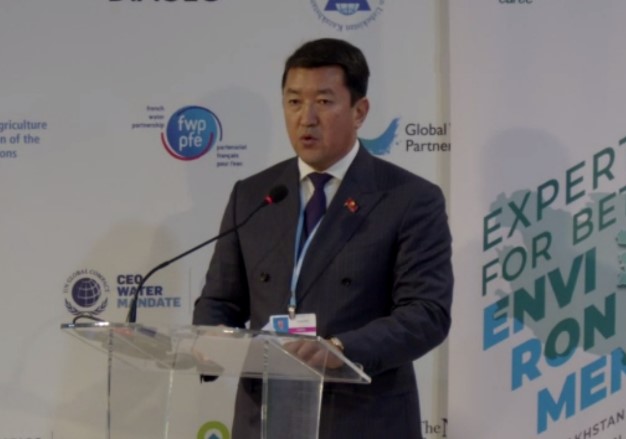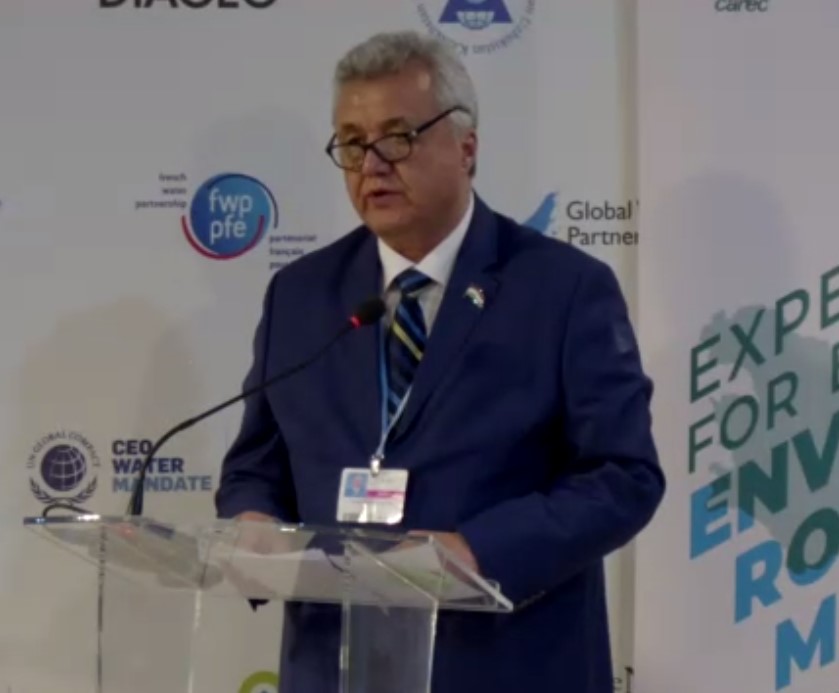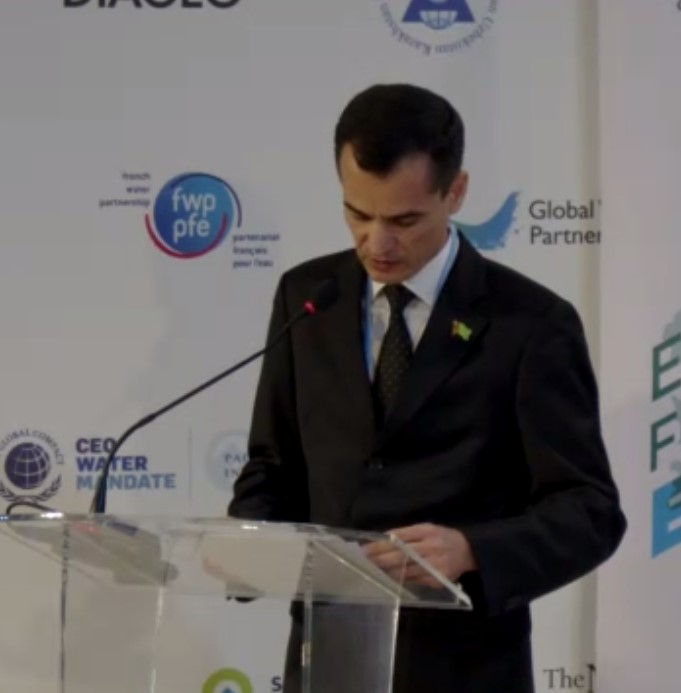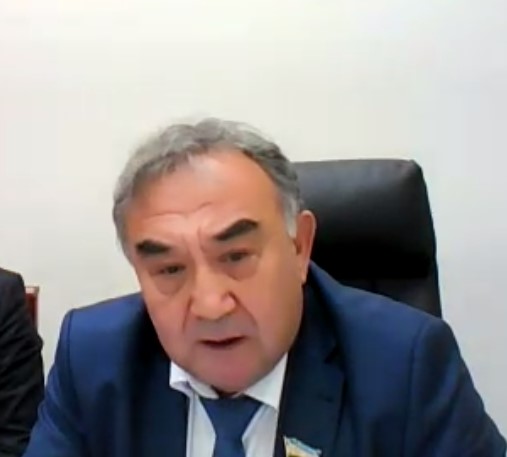November 9, 2022, UNFCCC COP-27, Sharm el-Sheikh, Egypt. Eighth meeting of representatives of ministries of foreign affairs and parliamentarians of Central Asian countries “Towards regional coherence and cooperation of Central Asian countries in the field of climate policy, finance and the implementation of Nationally Determined Contributions (NDCs)”.
Participants - representatives of the Ministries of Foreign Affairs and parliaments of the Central Asian countries, UNFCCC coordinators in Central Asia, members of national delegations, as well as representatives of international organizations, diplomatic missions, civil society, business, regional and national experts.
Quotes. Important points only.
Zafar MAKHMUDOV, Executive Director of the Regional Environmental Center for Central Asia (CAREC):
“The year of 2022 will be the most important year for combating climate change since adoption of the Paris Agreement. Today, the economic damage from drought and floods is about 1.3% of the annual regional GDP. Without adaptation measures economic losses could reach 2 to 5% of the total GDP of the Central Asian region by 2050. If decisive action is not taken today, subsequent adaptation to climate change will require great effort and cost”.
Sulton RAKHIMZODA, Chairman of the Executive Committee of the International Fund for Saving the Aral Sea (EC IFAS):
“Speaking about the impact of climate change on our economy and, in general, on our lives, we should not forget that we also contribute to this process development. According to available data, in 2019, the total CO2 emissions of the countries of Central Asia amounted to 558 Megatons, or 1.53% of global emissions. Of course, this is less than in 1990, when our contribution at the global level was 2.03%, but it is much more than this indicator for 2010, which is 1.26%”.
Aizhan SKAKOVA, Member of the Committee on Ecology and Nature Management of the Mazhilis of the Parliament of the Republic of Kazakhstan:
“To implement the NDC, Kazakhstan needs to mobilize a total of 708.3 billion USD by 2030, including an additional investment requirement in the amount of 293.5 billion USD for implementation of measures to decarbonize the economy, including the need to transition to BAT, improve energy efficiency and build new renewable energy facilities.
As a result of the transformation, energy intensity of national GDP by 2030 should decrease by 38.9% and carbon intensity of GDP should decrease by 41.4%.
The share of coal in power generation structure will decrease from 68.9% to 40.1%.
The share of renewable energy sources, taking into account large HPPs, in covering domestic electricity demand during 10 years should increase from 11% in 2020 to 32.7% in 2030.
During 6 years, there was a decrease in energy intensity of GDP by 11%, which is indicative of the feasibility of achieving the updated NDC. The implementation of the entire range of planned sectoral and cross-sectoral decarbonization measures should lead to increased competitiveness of Kazakhstani economy”.
Nurbek ALIMBEKOV, Deputy of the “Mekenchil” group of the Committee on Agrarian Policy, Water Resources, Ecology and Regional Development of the Jogorku Kenesh of the Kyrgyz Republic:
“Kyrgyzstan is ready to achieve carbon neutrality by 2050 and RES will be a locomotive in achieving this goal. Emphasis will be placed on hydropower.
Currently, the republic has launched the development of a long-term strategy for carbon neutrality by 2050. The process of a roadmap development for NDCs implementation has also been launched. By 2030, Kyrgyzstan plans to reduce greenhouse gas emissions by 16% using its own resources”.
YUSUFI Muhammadrahim, Chairman of the Ecological Commission, Member of the Committee on International Affairs, Public Associations and Information of the Majlisi Namoyandagon of the Majlisi Oli of the Republic of Tajikistan:
“Tajikistan makes efforts to further reduce its greenhouse gas emissions in the future and plans to implement significant climate change mitigation initiatives. This refers to the Forest Sector Development Strategy, which has not yet been adopted, but has an estimated climate change mitigation impact by 2030. This also applies to commissioning of the Rogun HPP, where two of the 6 units have been put into operation. The effect and commissioning of the hydroelectric power plant is included in the unconditional scenario, along with additional climate change mitigation actions with the potential to reduce greenhouse gas emissions. The implementation of all actions included in the conditional scenario will require significant international support, which will allow Tajikistan to significantly reduce its emissions by 2030.”
Azat SEYDIBAYEV, Chairman of the Committee of the Mejlis of Turkmenistan on environmental protection, nature management and agro-industrial complex:
“In our country, to adapt to climate change in agriculture, modern, more advanced from environmental point of view technologies for land reclamation and rational water resources use are actively introduced. In this context, implementation of the project for construction of the Turkmen lake “Altyn Asyr” is of particular importance designed to collect drainage water from the irrigated lands of the country.
Millions of tree seedlings are planted in Turkmenistan annually. The country will further enhance efforts to adapt to climate change through the nationwide greening plans implementation. Over the past years, more than 145 million seedlings have been planted in Turkmenistan. Here I would like to note with great respect that the United Nations Economic Commission for Europe awarded the city of Ashgabat with the International Certificate “Challenge: Trees in Cities” as a sign of gratitude for the support of the initiative and a significant contribution to improving the environment by planting seedlings. An updated version of the National Forest Program was approved, which is valid for the period from 2021 to 2025, along with the Action Plan for its implementation. Active planting work is also carried out in the zone of the Turkmen Aral Sea - Lebap and Dashoguz velayats".
Bory ALIKHANOV, Chairman of the Committee of the Senate of the Oliy Majlis of the Republic of Uzbekistan on the development of the Aral Sea region and ecology:
“In January 2022, by the Decree of the President of the country, the “New Uzbekistan Development Strategy for 2022-2026” was approved, where emphasis is maid on “green” energy development. A task has been set and is being implemented to bring power generation from renewable sources (RES) to about 11,000 MW by 2026.
In particular, by 2026 the capacity of only solar and wind power plants in Uzbekistan will reach 8,000 MW, the capacity of hydroelectric power plants will reach about 3,000 MW.
As a result, the share of renewable energy (“green” energy) will be 25% of the total power generation in the country by this year”.
The eighth meeting of representatives of the ministries of foreign affairs and parliamentarians of the Central Asian countries was devoted to discussion of the NDCs of the CA countries, regional initiatives and goals at the legislative level, as well as mobilization of climate finance.
Additional information - Irina Bekmirzaeva, Program Manager “Climate Change and Sustainable Energy”/ CAMP4ASB Project Coordinator, ibekmirzaeva@carececo.org
